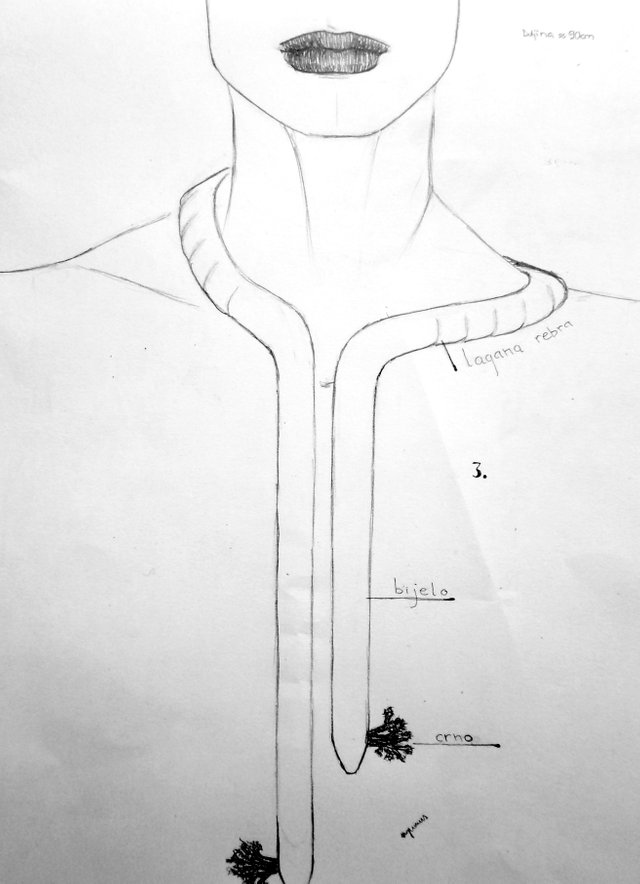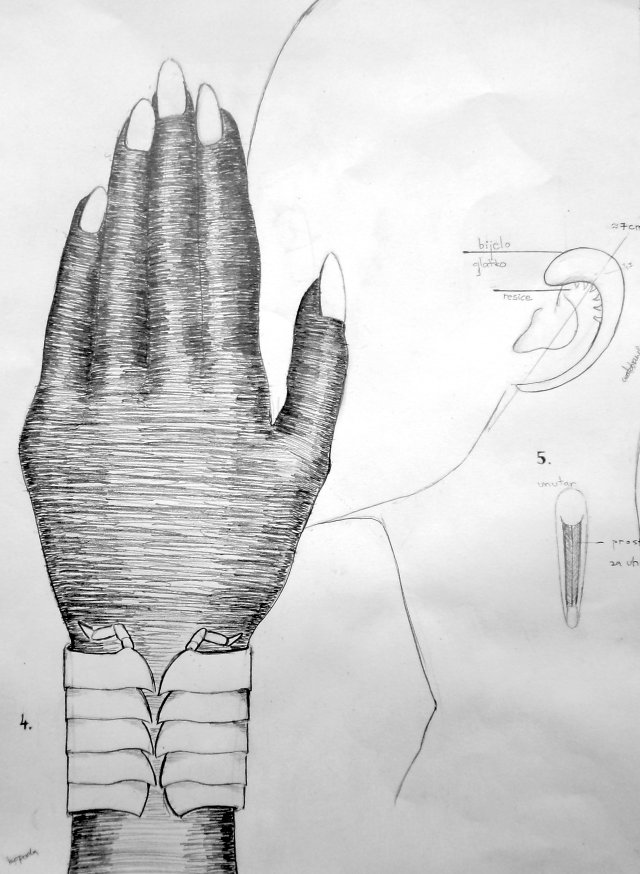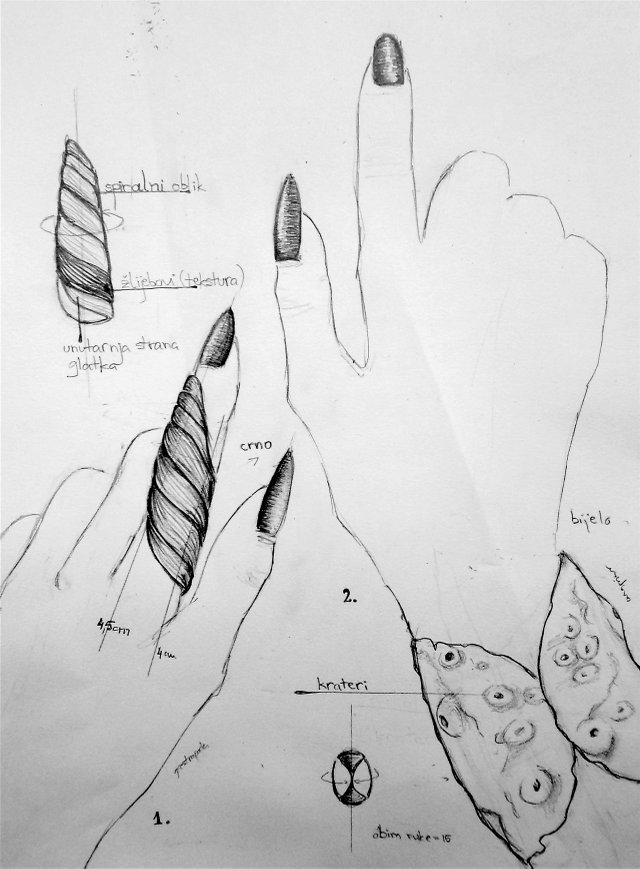Regressive Evolution
Regressive Evolution
a type of evolutionary development with typical characteristics such as morphological simplification and regression, degeneration or reduction of organs that are no more relevant
Life deep, deep away
''But the notion of ‘regressive evolution’ with its orthogenetic baggage is both unnecessary and potentially interferes with combining new reductionist approaches to the neo-Darwinian perspective.''
Image ilustrates stygobiont Proteus anguinus. Amphibian has a remarkably well-developed taste sensation and its speciality are electroreceptors. The tufts on the sides of the head are of bright red colour because of the blood. It can live up to a hundred years.
According to speleologist A. Vandel the region that has the most abundant cave fauna in the world is karst area of Istria, Kranjska, Croatia, Dalmatia, Herzegovina, Montenegro and Albania. Subterranean biodiversity is quite high, estimating the number of troglomorphic species at 50,000 to 100,000. The hypogean environment includes karsts, lava tubes, ice caves and underground lakes and rivers.
Biospeleologists have different approaches about the reasons for invading the hypogean environment, which unlike the epigean photosynthetic systems, is characterized not only by the darkness but also by the stagnation of specific abiotic conditions such as humidity, temperature, water chemistry, isolation and space restriction as well as energy restriction. Temperatures in caves are approximately between 4 and 16 degrees Celsius.
The colonization of caves is generally seen as accidental (entrapment or refugium), or because of some other unusual circumstance, and this assumption derives from the premise that caves are harsh environments with impoverished resources and the only reason organisms stay in hypogean environment is because they become 'trapped'.
Other explanations support the opportunistic view, according to them colonization happened because of the potential advantages including environmental stability, exploitation of new niches, and protection from predation. Subterranean fauna is a reflection of events in a relatively distant past and happened because of increasing selection stress i.e. changes in surface conditions (climate change, water movement, ice age changes, geological changes of earth crust...). Today, those species are endemic, relics from the ancient geological past.
The process of transition to underground life involves three phases, a period of preparation, adaptation and stabilization.
Regressive features
Evolutionary processes do not always go from simpler to complex, in the underground morphological simplification is the norm.
Natural selection rejected features that were not used or were inconvenient. The result is a gradual degeneration, in 100,000 years the species are changed radically that they can no longer leave the cave. However, epigean features can still be expressed at an early stage of the development of some animals. Proteus anguinus after birth has epigean traits – well-developed eyes, small black chromatophores. In the next months and the ocular nerves degenerate and the pigmentation also.
As animals are more adapted to living in the underground, the degree of reduction of vision organs is higher, partial or complete loss of eye pigmentation or reduction of the ocular lens to the complete absence of organs.
There is also partial or complete reduction of other parts, some parts of the body, such as bulges, hairs, wings, reduction or loss of shell in fish and the like. Subterranean animals are depigmented since the pigment lost its protective role from UV radiation.
Their slow metabolism is the result of balanced temperature, hypoxic conditions - reduced oxygen consumption, scarce food supplies, therefore they have a longer lifespan than their epigean relatives. It takes significantly more time to achieve sexual maturity, and an increase in the animal population is lower. Reproduction runs regardless of the season.
Aggressive behavior is reduced due to smaller populations and lack of visual communication. Specific forms of aggression are noticed that are caused by touch or because of the sense of movement of water. The male of proteus anguinus can display aggressive behavior because of the territory struggle.
The type of 24h synchronized behavior caused by light and temperature does not occur in this environment.
Progressive features
The elongation of appendages, limbs, antennas, hair and other body parts is supposed to facilitate the detection of tactile stimuli, water and air flow. Common troglomorphic characteristics are specialisation of sensory organs, chemoreceptors, hygroreceptors, thermoreceptors, pressure receptors; compressed body shape, increased number of eggs, enlargement in size.
Developed senses for sound, smell and touch as a replacement for vision loss. Increased number of taste buds. Accumulation of fat to survive periods of low concentration of food. Brain changes, increased avoidance of obstacles, enhanced memory of space.
Ilustration: Tithanethes albus and Nipharagus, endangered species.
Adaptation of morphology and behaviour
Troglomorphism is a term referring to animals that are adapted to a life in a cave. A strong selection stress must be involved for the development of particular characteristic, and the genetic and psychological ability of the organism to respond to this pressure.
Of all the phenotypic traits, behaviour plays an immediate role in determining the ability of a group or individual to survive the colonization of the hypogean environment. Changes in behaviour in response to a change in the environment are crucial to understanding the phenomenon of adaptation. Each particularity of the organism is the result of the interactive action between genetics and the environment. Troglomorphic animals are derived from epigenetic species characterized by phenotypic plasticity. Phenotypic plasticity is the ability of one genotype to produce more than one alternative form of phenotype in response to environmental conditions.
Numerous animals that inhabit the underground develop entirely new abilities, such as echo-locating bats, bioluminescence in New Zealand worms, hibernation. These are exceptions, not the rule.
Eye adaptation as the most prominent characteristic, because in the dark is energetically demanding to keep the eyes functional with photopigments, optical structures, light / dark adaptation mechanisms, nerve connectors for the brain, and the ability to integrate and interpret visual signals. It is a luxury that can become a handicap because the eyes can be injured and infected, or become an obstacle in movement.
Reduced aggressive behaviour, metabolic rate measured through animal reaction to interference, excitement without external motion expression. High resistance to the threat is effective in energy conservation.
Regressive evolution is described as a reduction of nonfunctional characteristics and refers to structural, behavioural and physiological traits. Reduction of the characteristic reduces unnecessary energy consumption. Saved energy can be transformed into the development or support of other characteristics or for growth, reproduction, and survival during food shortages.
Many troglomorphic species are likely to invade the hypogeanic environment more recently, because their epigenetic ancestor is easily recognizable and they can even be bred to produce genetic hybrids
Illustration: Zospeum isselianum and Eunapius subterraneus, the only stygobitic freshwater sponge



Literature